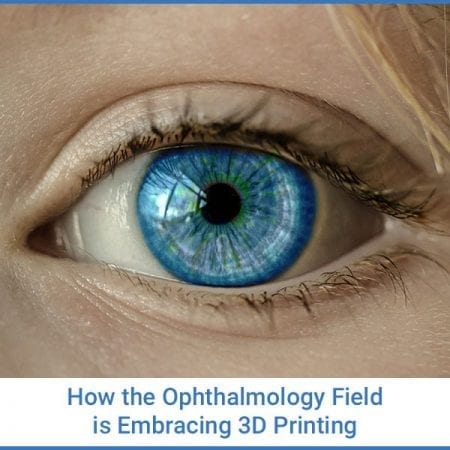 While most of the technological developments that impact the ophthalmological field are from doctors and researchers in this field, there are some exceptions. A great example of this happened with 3D printing – something that’s been used in many creative ways in the past 8 – 10 years thanks to printers and materials that are more affordable and readily available.
While most of the technological developments that impact the ophthalmological field are from doctors and researchers in this field, there are some exceptions. A great example of this happened with 3D printing – something that’s been used in many creative ways in the past 8 – 10 years thanks to printers and materials that are more affordable and readily available.
How 3D Printing Works
Sometimes referred to as additive manufacturing, this process uses a computer to create a 3D object by depositing layer upon layer of material until you have a finished product. This is done in one of two ways:
- Extrusion: The material (usually melted plastic) is pushed out the tip of a nozzle like how a glue gun works
- Sintering: A powder or liquid is deposited one layer at a time before having a light or laser shined on it so it’ll harden
With 3D printing you can print objects in almost any material (e.g. ceramic, metal, living tissue). You can also print them as small or as large as you need.
Uses in Ophthalmology
There are several ways that 3D printing can be used in ophthalmology, including:
- Creating new surgical tools
- Replacement parts for optical and ophthalmic equipment
- Helping plan surgeries
- Creating custom implants (e.g. drug-dispensing devices, retinal prosthesis)
- Pre-operative morphing – Helping patients understand how they’ll benefit from a procedure and what the end result will look like
- Crowdsourced projects in which ophthalmologists from around the country can work together on a project using the same model
- Printing duplicates of your patient’s anatomy and skeletal structure so you can practice the surgery on the model before performing it on your patient
All these things are beneficial because they’re more cost-effective than yesteryear’s processes, especially when large numbers of items are needed in a short period of time or something must be custom-made.
Challenges yet to Overcome
There are still some challenges that we must overcome here, much as there would be with any new technology. Some of the challenges that are particularly pertinent to the field of ophthalmology include:
- New materials still need to be developed and approved for medical purposes
- Printer resolution
- Finding really useful content to create
- Continued technological progression with FDA approval
- Clearly, there’s still a lot of room for growth in this field.
How Ophthalmology can Make the Most of 3D Printing Today
Now that these printers are affordable (under $500) and you can download models online, it’s easier than ever to use this technology. You don’t even have to buy a printer if you don’t want to. There are places where you can go and use their printer instead (e.g. office supply stores, Home Depot). Some of these places even have catalogs online so you can have the item printed and shipped to you, which is great because you probably don’t need a printer in your office yet. Of course, if you’re interested in experimenting with the technology on your own, it’s a good idea to get a printer. However, if you want to create a prototype, this isn’t necessary.
Regardless of where you get a printer, this technology is being widely utilized today. Prosthetics are being widely used by volunteers (e.g. Boy Scout troops, school classrooms) for children in need. This is only the beginning of what we’ll see from this evolving field. Where we’ll go or what we’ll see is something many people are excited to think about today.
Picture Credit: Pixabay
